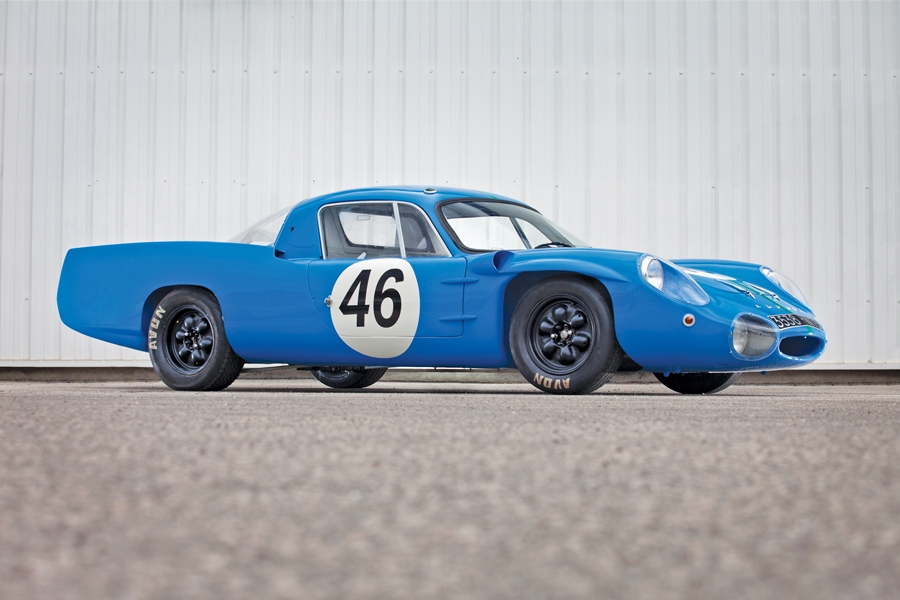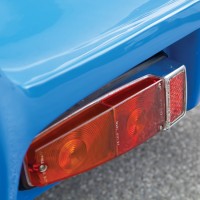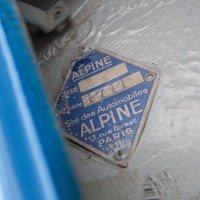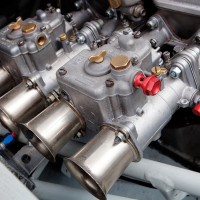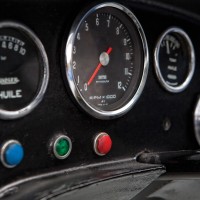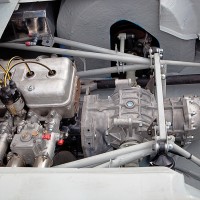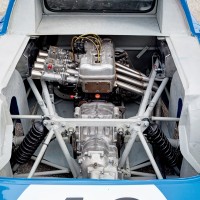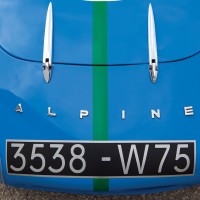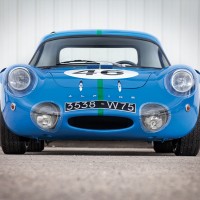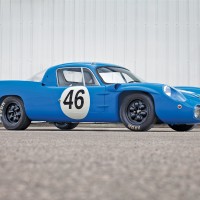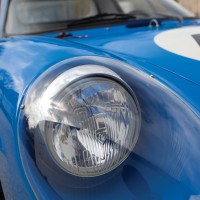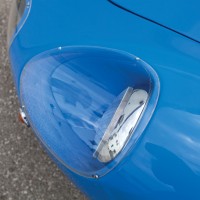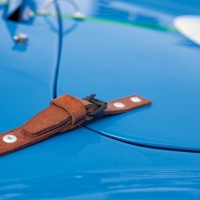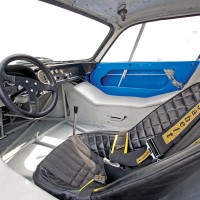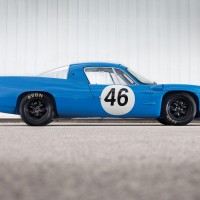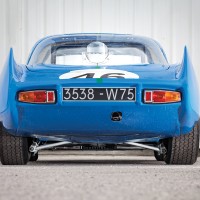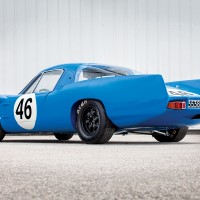SCM Analysis
Detailing
| Vehicle: | 1964 Alpine M64 |
| Years Produced: | 1964 |
| Number Produced: | Three |
| Original List Price: | N/A |
| SCM Valuation: | $250,000 to $300,000 |
| Chassis Number Location: | N/A |
| Engine Number Location: | N/A |
| Club Info: | Club Alpine Renault |
| Website: | http://www.clubalpinerenault.org.uk |
| Investment Grade: | B |
This car, Lot 156, sold for $431,545, including buyer’s premium, at the RM Monaco auction on May 10, 2014.
Everybody wants to win Le Mans. If this is not universally true, it certainly is true for performance-oriented European manufacturers — and particularly the French. For them, Le Mans is more than an icon; it is the Holy Grail. Unfortunately, Le Mans is a very long race on a very fast circuit, so bigger cars are definitely favored — I don’t think it has ever been won by a car under 3 liters.
This presented a problem for France during the early 1960s, as their entire industry didn’t produce a single automobile engine over 2 liters. The fallback was to win something at Le Mans rather than the race itself, and the Le Mans organizers obliged by creating a special award, the Index of Thermal Efficiency, which clearly favored tiny cars and was almost reserved for French entrants.
As noted in the catalog copy above, Alpine was started in the mid-1950s to prepare and rally Renault-based cars. By the early 1960s, Alpine was for all intents and purposes the Renault competition department. Although the primary focus was on rallying, the attractions of Le Mans presented an irresistible temptation to Alpine’s managers. The quasi-production Alpine A110 was way too heavy for endurance racing use, so they decided to create a purpose-built road racer in the M63 and successor M64.
Production or prototype?
This is a good time for a quick digression into the arcana of FIA racing groups, particularly as they applied to Le Mans in this era. The original idea of Le Mans was that it was an endurance test for production automobiles, but pure racers became welcome because they made for a much better show.
To allow this while maintaining the illusion of production racing, the organizers created two categories: Grand Touring and Prototype. Grand Touring is production cars: sports and GT cars with standard specifications and a substantial minimum number built. The pure racers were imagined to be prototypes of eventual production cars and had no minimum number (although they had to meet certain “production” standards, such as luggage space and a spare tire). The Grand Touring cars had six displacement classes from 1,150 cc to over 5 liters, but Prototypes had three, about which we’ll talk later.
Determining what was truly production and what was prototype could be a bit tricky; Porsche’s 904 with its 2-liter, 4-cylinder engine was a GT car, while the same car with the 8-cylinder engine was a prototype. Ferrari’s GTO/64 (of which they built three) was considered a variation of a 250 SWB and thus competed as a 3-liter production Grand Touring instead of Prototype — go figure.
All of this was academic for Alpine: the M64 was a purpose-built road racer with a tubular frame and suspension, Hewland transaxle, very special DOHC head with Webers, and a custom-designed body. The only “production” component in the entire car was the Renault R8 block bored out to 1,148 cc. It was going to have to run as a Prototype. Like the Porsche 907 I discussed last month (July 2014 Race Profile, p. 64), Alpine’s hopes for success depended on the car being tiny, extremely light, ultra-low drag, and very reliable. The Alpine M64 proved to be all of these things, and it achieved glory for Le France at Le Mans, running flawlessly through the race, finishing well, and winning the Thermal Efficiency award.
A class for France
It also won its class at Le Mans, but a bit of explanation is in order here. The FIA set many aspects of the rules defining production GT and Prototype, but promoters, and particularly Le Mans, were allowed great leeway in how they wanted to set the displacement limits for the classes. Le Mans and Reims, the two French venues, chose to be sure there was an appropriate class for the national flag bearers. The Prototype classes at Le Mans for 1964 were set as follows: Over 5 liters (big V8s), 3 liters to 4 liters (Ferraris, Cobras and GT40s), and 1,000 cc to 1,150 cc (guess who). At Reims a few weeks later, the limit was a more generous 1,300 cc, but the three M64s finished 1, 2, 3 in their class anyway.
Always a French racer
Alpine’s aspirations didn’t seem to extend beyond France, so with the two French rounds of the world championship circuit finished, the M64’s job for the 1964 season was largely complete. It ran a few hillclimbs and the Paris 1000 km before the end of the season. Afterwards, it served as a test bed in the development of the successor M65. It was entered in the French rounds of the 1965 championship, primarily as backup, with middling results, then acquired its fins acting as a design prototype for the A210 of 1966 (the original M64 design had no fins at all, having sort of a pinched-off rear section).
At this point Alpine sold it as a very tired old racing car (to a Frenchman, of course, who in 1977 sold it to another). This is a quintessential French racing car: created by Frenchmen to compete for the glory of France in French races and really nowhere else. I doubt that it has ever in its life left French soil (well, Monaco, of course, if that counts).
There is an old line often ascribed to people of my ethnic background: “You can always tell a Norwegian, you just can’t tell him much,” and in many ways that seems to apply to French automobiles as well. French cars, and particularly racing cars of the 1950s and 1960s (before computers designed everything) are notoriously, well, different. They are generally tiny, quirky, not very fast, and absolutely unapologetic about it. “Weird” is a badge of honor with these cars, and they bear it proudly.
For the limited but very real group of people who love these French cars there is no substitute — Germans have no soul, English cars have no savoir-faire, and don’t start about the Italians — for these collectors, there ain’t nothin’ like a dame.
The price of an icon
It’s tough to talk about objective value for a car like this because this is about emotion: for a Francophile collector this car is an icon — a summation of what it means to be French. To me, this seems like an awful lot of money for a car that would have a tough time staying with an MGB, but that’s not the point.
This is about pride of place, a sense of history, and the joy of being French. To the right people for the right car, those are serious collector values worth bidding for. I’d say fairly — if expensively — bought. ♦
(Introductory description courtesy of RM Auctions.)
